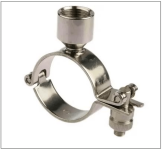I think it's to protect the grid seal, they have a comment on that in the data sheet.
Jan
Jan
To protect metal to glass vacuum seal on the first place .140ºC doesn't seem very high for an upper max. Is that to protect the seals or prevent thermal runaway?
Slightly OT:
Has any of you access to, or know a source of, 'Analog Circuit Design ', by Hauser, Klumperink and Meyer?
Jan
Has any of you access to, or know a source of, 'Analog Circuit Design ', by Hauser, Klumperink and Meyer?
Jan
Broke out the Vokam I bought years ago. Now on a hunt for a user guide.
https://picclick.co.uk/Shandon-Vokam-5000-250-Electrophoresis-Power-Supply-183971038638.html
Jan
https://picclick.co.uk/Shandon-Vokam-5000-250-Electrophoresis-Power-Supply-183971038638.html
Jan
What does this mean? It means that if you place the isolated part of that connector in contact with a (grounded) metal part, there should be less than 1000V between them. A voltrage spec is always 'between two points', you can't have 'a' voltage on a point.
In the picture if you see the connector on the HV meter at the top right, clearly even if the 4mm banana was naked there would be no problem.
So it's all context.
Jan
In the picture if you see the connector on the HV meter at the top right, clearly even if the 4mm banana was naked there would be no problem.
So it's all context.
Jan
I'm sure you realize the risks but not necessarily others who are following your thread.
As long as nearest ground petential surface is kept at distance it should not be a problem.
But temp also matters, how are you going to cool the anode?
But temp also matters, how are you going to cool the anode?
Not sure, depends on the temp of course.
I have an IR temp camera.
The dissipation will be about half of max, possibly natural convection will keep it below 140C.
The definite anode clamp can be connected to a floating heatsink.
Or a small whisperfan should do it.
First I need to measure things, then I can decide what is needed.
No use speculating (or worrying!) beforehand.
It's just engineering.
Jan
I have an IR temp camera.
The dissipation will be about half of max, possibly natural convection will keep it below 140C.
The definite anode clamp can be connected to a floating heatsink.
Or a small whisperfan should do it.
First I need to measure things, then I can decide what is needed.
No use speculating (or worrying!) beforehand.
It's just engineering.
Jan
No, corona is ionisation of the air, even if there is no grounded element in sight.As long as nearest ground potential surface is kept at distance it should not be a problem.
It is the result of high potential gradients, like at the tip of sharp parts or edges.
That's why you need to place a nice rounded blob of solder on a high voltage solder connection.
Jan
It's why 18th-century electrifying machines used needles with sharp tips to collect the charge. Afnemerkammen, in Dutch.
- Home
- Amplifiers
- Tubes / Valves
- Looking for high-voltage tubes

